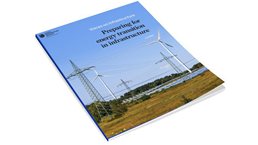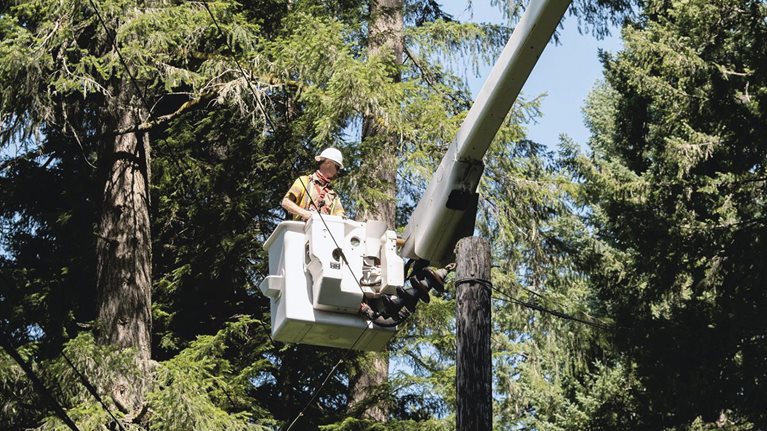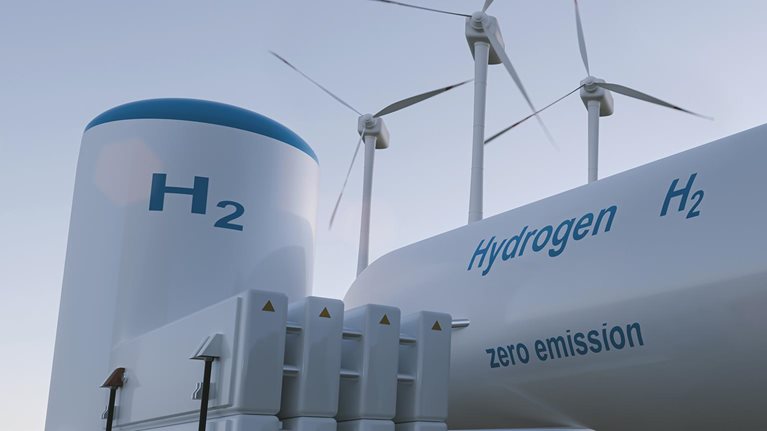This issue explores sustainability in infrastructure, particularly as it relates to the construction, engineering, and operation of our electric grids; oil and gas and hydrogen infrastructure; and buildings. Over the past 18 months, we have seen an acceleration of societal, policy, and investor pressures on industry to shift away from fossil fuel–based energy and toward a zero-carbon economy. As an example, while few oil and gas companies at the start of 2020 had announced 2050 net-zero emissions targets, today dozens have, including several with stated targets of or before 2040.
The bar continues to rise, especially as shareholder groups continue demanding broader and faster emissions reductions from the sectors with the highest emissions. The resulting capital challenges are massive. We and others estimate that at least $50 trillion will need to be deployed to reduce fossil-fuel and other greenhouse gas (GHG) emissions by 2050 to meet the goals of the Paris Agreement. Given that the assets and infrastructure that support the economy today are the result of decades of deployed capital, investment decisions by capital providers and industry players in the next few years will be critical. Furthermore, the implications are significant, requiring “brown-to-green” asset transformations (such as replacing diesel generators on offshore oil platforms with renewable power), new infrastructure (for the electrification of transport), and scaling new technologies (such as green hydrogen and carbon-capture technology).
As a result, much uncertainty remains around how best to navigate the energy transition. Which assets could be upgraded to adapt to evolving emissions standards? Which should be decommissioned and dismantled? What new infrastructure needs to be built from the ground up? Further complicating matters, the transition to new sources of energy to meet emissions goals entails stabilizing capacity to withstand fluctuations in demand and supply, weatherizing assets to contend with increasingly common extreme events, and building new supply chains for novel technologies.
Investors, corporate players, and policy makers will need to collaborate to scale emerging technologies, many of which not only require large sums of upfront capital but also have high technical risks and uncertain cash flows. All of these challenges also come with the pressures of delivering projects on aggressive timelines, as required by regulators and individual company commitments.

Voices on Infrastructure: Preparing for energy transition in infrastructure
We hope the following four themes in this issue of Voices help inspire leaders globally to reimagine the production and use of energy in infrastructure:
- Building a more resilient electric grid. The physical effects of climate change, such as extreme temperatures, forest fires, and floods, are taking a toll on electric grids. Owners and operators can build resilience to face such events and maintain stability when transitioning to and integrating renewable sources of energy. Furthermore, both electrification and new supply sources will likely require an unprecedented commitment of resources to upgrade and build infrastructure.
- Increasing sustainability in engineering and construction. The construction industry is directly or indirectly responsible for almost 40 percent of global CO2 emissions from fuel consumption and 25 percent of GHG emissions overall. Our assessment shows that it is possible to reach net-zero emissions for operating buildings at an average cost of €5 per ton of CO2, contributing substantially to the overall net-zero pathway that can be achieved at net-zero cost by 2050 in Europe. A combination of several measures can help, including design and process optimization, alternative materials and equipment, and reducing emissions through increased production efficiencies.
- Accelerating the adoption of novel technologies. Carbon capture, electrolysis, and the integration of wind and solar energy will likely prove critical to increasing sustainability in engineering. Digital technologies are also playing important roles in infrastructure, especially in supporting electrification and renewable energy sources. New partnerships with tech-minded companies and start-ups, as well as with needed capital partners to scale these projects, can help incumbents focus on their strengths and pursue promising pathways.
- Assessing the opportunities in decarbonizing oil and gas and chemicals. The transition from “brown” to “green” infrastructure and deep decarbonization of the oil and gas sector is under way as multiple companies commit to blue and green hydrogen projects and carbon-capture technologies. It’s only a matter of time before blue hydrogen is scalable from a technology perspective. Pursuing sustainability in process engineering can help lead the way.
How industry players respond to climate change in the years to come will have long-lasting effects on the buildings we live in, the power we use, and the safety of our communities—yet much work remains to hit net-zero goals. As an industry that encompasses so many fundamental aspects of our lives, infrastructure can play a key role in the pursuit of a cleaner, greener future.
This article is part of Global Infrastructure Initiative’s Voices on Infrastructure.


